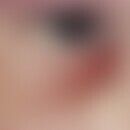Synonym(s)
DefinitionThis section has been translated automatically.
The term "surfactant" (from the Latin tensus "stretched") is generally used to describe a washing-active substance (detergent) contained in detergents, dishwashing liquids and shampoos. When these substances are used in food technology and pharmaceutics, surfactants are given the designation "emulsifier".
Surfactants are natural or artificial substances which reduce the surface tension of a liquid or the interfacial tension between two phases and thus enable or support the formation of dispersions or act as solubilizers. Surfactants have the effect that two liquids that are not actually miscible with each other, such as oil and water, can be combined to form an emulsion. All surfactants are composed of a non-polar and a polar part (functional groups) (polarity). The non-polar part is always an alkyl group.
If a surfactant is added to water, the individual surfactant molecules arrange themselves from a critical concentration and usually form very small droplets within the water, which are called micelles. The surfactant molecules align themselves in such a way that the hydrophobic ends protrude into the interior of the droplets and the hydrophilic ends arrange themselves towards the surrounding water environment. Depending on the concentration, the formation of worm-like micelles is also possible. Water can also be enclosed by a surfactant double layer. The surfactants form a thin layer on the water surface and thus reduce the surface tension of the water. Here too, the surfactant molecules arrange themselves as follows: the hydrophilic ends extend towards the water, the hydrophobic ends extend towards the air.
ClassificationThis section has been translated automatically.
- Non-ionic surfactants (nio-surfactants) are surfactants that contain no dissociable functional groups and therefore do not separate into ions in water. Nonionic surfactants, like other surfactants, are composed of a non-polar and a polar part. A fatty alcohol (C12-C18) often functions as the non-polar part. The polar groups are often hydroxy groups and ether groups: -OH (alcohol) and -O- (ether).
- Anionic surfactants usually have a carboxylic acid or sulphate group at one end. These are negatively charged when dissolved in water (hence the name: an - ionic, i.e. negatively charged): Polar groups: -COO¯(carboxylate); SO3¯(sulfonate); -OSO3¯(sulfate)
- Cathionic surfactantshave a positive charge in solution; they are usually quaternary ammonium salts (quats), i.e. nitrogen with 4 bonds and a positive charge. Cationic surfactants are used as antistatic agents in fabric softeners and cosmetic care products. The most important representative is distearyl dimethyl ammonium chloride. Polar groups: R4N̟+ (quaternary ammonium group).
- Amphoteric surfactants have a zwitterionic (ionic) character, i.e. they have both a positive and a negative charge in one molecule. Polar groups: Mostly COO¯ (carboxylate) and R4N̟+ (quaternary ammonium group)
General informationThis section has been translated automatically.
In detergent formulations the surfactant content is 1-40%.
The most important surfactant worldwide is linear alkylbenzene sulfonate (LAS) with an annual production of 4 million tons. Another important surfactant with steadily increasing importance (current production volume: 90,000 tons) is methyl ester sulfonate (MES, sodium alpha-sulfoalkanecarboxylic acid methyl ester).




